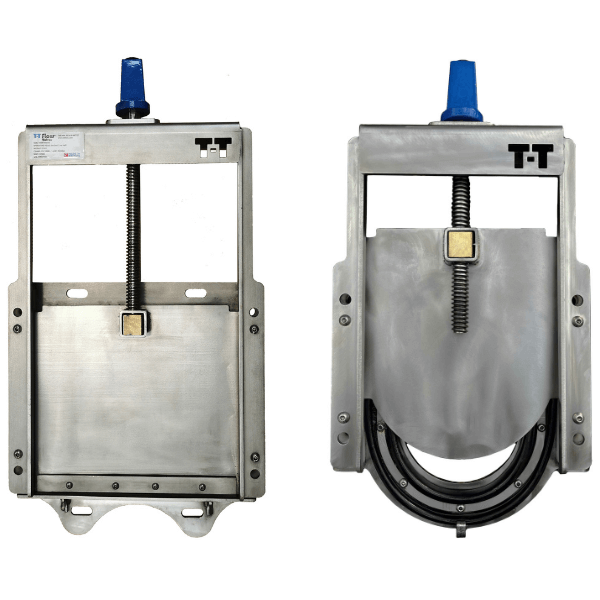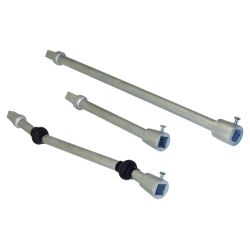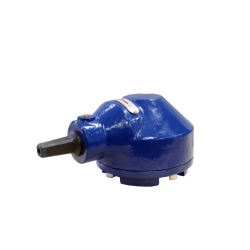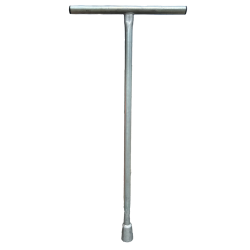Penstock - DN100-DN300, SS304, Wall Mounted, Non-Rising Stem
A robust range of penstock valves for fluid control and isolation that operates via a sliding gate that acts upon a mechanically controlled spindle, square cap, gearbox or actuator.
T-T Flow’s bi-directional penstocks are available with a square, rectangular or round aperture, resilient sealing to all four sides, flush invert and robust closed frame. They are fabricated in stainless steel to ensure durability and reliability, consistently providing accurate flow.
Suitable for isolation duties water, wastewater and process applications.
Product Information
Penstock - DN100-DN300, SS304, Wall Mounted, Non-Rising Stem
Features
- Bi-directional with resilient sealing to all sides
- Fabricated in stainless steel to EN10088 1.4201 (304) or 1.4401 (316) with complementing fasteners
- Non-rising rolled stainless steel spindle, rising spindle on request
- Self-cleaning high-density polyethylene gate guides for reduced friction
- Self-adjusting EPDM seals for optimal sealing performance
- Seating pressure: 6MwC on/off seat
Benefits
- Designed and manufactured in the UK
- Lightweight design
- Excellent performance
- Corrosion resistant





